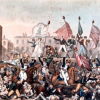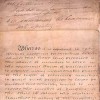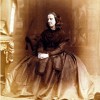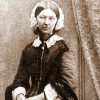Gender, Sexuality, and the Law
Created by Linda Hughes on Thu, 01/10/2019 - 08:01
Part of Group:
Legislation and policies affecting gender roles and policing of sexuality
Timeline
Chronological table
| Date | Event | Created by | Associated Places | |
|---|---|---|---|---|
| 1 Jan 1792 |
Vindication of the Rights of Woman
ArticlesAnne K. Mellor, "On the Publication of A Vindication of the Rights of Woman" Related Articles |
Dave Rettenmaier | ||
| 16 Aug 1819 |
Peterloo massacre
Related ArticlesJames Chandler, “On Peterloo, 16 August 1819″ Sean Grass, “On the Death of the Duke of Wellington, 14 September 1852″ |
Dave Rettenmaier | ||
| Jun 1832 |
Reform Act
ArticlesCarolyn Vellenga Berman, “On the Reform Act of 1832″ Related Articles |
Dave Rettenmaier | ||
| 29 Aug 1833 |
Factory Act
ArticlesRelated Articles |
Dave Rettenmaier | ||
| 17 Aug 1839 |
Act on Custody of Infants
Related ArticlesRachel Ablow, “‘One Flesh,’ One Person, and the 1870 Married Women’s Property Act” Kelly Hager, “Chipping Away at Coverture: The Matrimonial Causes Act of 1857″ Jill Rappoport, “Wives and Sons: Coverture, Primogeniture, and Married Women’s Property” |
Dave Rettenmaier | ||
| 14 Mar 1856 |
Petition for Reform of Married Women’s Property LawOn 14 March 1856, presentation of the Petition for Reform of the Married Women’s Property Law, 1856. The petition began the joint effort by lawmakers and public women to grant married women control of their own wealth. ArticlesJill Rappoport, “Wives and Sons: Coverture, Primogeniture, and Married Women’s Property” Related ArticlesRachel Ablow, “‘One Flesh,’ One Person, and the 1870 Married Women’s Property Act” Anne D. Wallace, “On the Deceased Wife’s Sister Controversy, 1835-1907″ |
Dave Rettenmaier | ||
| 28 Aug 1857 |
Matrimonial Causes Act of 1857
ArticlesKelly Hager, “Chipping Away at Coverture: The Matrimonial Causes Act of 1857″ Related ArticlesRachel Ablow, “‘One Flesh,’ One Person, and the 1870 Married Women’s Property Act” Jill Rappoport, “Wives and Sons: Coverture, Primogeniture, and Married Women’s Property” |
Dave Rettenmaier | ||
| 1858 |
English Woman’s Journal first published
Articles |
Dave Rettenmaier | ||
| 9 Jul 1860 |
Nightingale Home and Training School for Nurses opened
ArticlesLara Kriegel, “On the Death—and Life—of Florence Nightingale, August 1910″ Related Articles |
Dave Rettenmaier | ||
| 15 Aug 1867 |
Second Reform Act
ArticlesJanice Carlisle, "On the Second Reform Act, 1867" Related ArticlesCarolyn Vellenga Berman, “On the Reform Act of 1832″ Elaine Hadley, “On Opinion Politics and the Ballot Act of 1872″ |
Dave Rettenmaier | ||
| 9 Aug 1870 |
1870 Married Women's Property Act
This Act established limited protections for some separate property for married women, including the right to retain up to £200 of any earning or inheritance. Before this all of a woman's property owned before her marriage, as well as all acquired after the marriage, automatically became her husband's alone. Only women whose families negotiated different terms in a marriage contract were able to retain control of some portion of their property. ArticlesRachel Ablow, "On the Married Woman's Property Act, 1870" Related ArticlesKelly Hager, “Chipping Away at Coverture: The Matrimonial Causes Act of 1857″ Jill Rappoport, “Wives and Sons: Coverture, Primogeniture, and Married Women’s Property” Anne Wallace, “On the Deceased Wife’s Sister Controversy, 1835-1907″ |
Dave Rettenmaier | ||
| 9 Aug 1870 |
Education Act of 1870
ArticlesFlorence S. Boos, “The Education Act of 1870: Before and After” |
Dave Rettenmaier | ||
| 1 Jan 1883 |
1882 Married Women's Property Act
ArticlesJill Rappoport, “Wives and Sons: Coverture, Primogeniture, and Married Women’s Property” Anne Wallace, “On the Deceased Wife’s Sister Controversy, 1835-1907″ Related ArticlesRachel Ablow, “‘One Flesh,’ One Person, and the 1870 Married Women’s Property Act” |
Dave Rettenmaier | ||
| Jan 1885 |
Franchise Act
|
Dave Rettenmaier | ||
| Jul 1885 |
The Maiden Tribute of Modern BabylonIn July 1885, W. T. Stead published The Maiden Tribute of Modern Babylon in the Pall Mall Gazette. Related ArticlesHeidi Kaufman, “1800-1900: Inside and Outside the Nineteenth-Century East End” |
Dave Rettenmaier | ||
| 14 Aug 1885 |
Criminal Law Amendment Act
Related ArticlesMary Jean Corbett, “On Crawford v. Crawford and Dilke, 1886″ Andrew Elfenbein, “On the Trials of Oscar Wilde: Myths and Realities” |
Dave Rettenmaier | ||
| 26 Nov 1888 |
London School Board electionsOn 26 November 1888 occurred the election for seats on the London School Board for the Sixth Board. Articles |
Dave Rettenmaier | ||
| Apr 1895 to May 1895 |
Trials of Oscar Wilde
ArticlesAndrew Elfenbein, “On the Trials of Oscar Wilde: Myths and Realities” |
Dave Rettenmaier | ||
| 30 Nov 1900 |
Death of Wilde
ArticlesEllen Crowell, “Oscar Wilde’s Tomb: Silence and the Aesthetics of Queer Memorial” Related ArticlesAndrew Elfenbein, “On the Trials of Oscar Wilde: Myths and Realities” |
Dave Rettenmaier | ||
| 28 Aug 1907 |
Deceased Wife's Sister's Marriage Act
ArticlesAnne Wallace, “On the Deceased Wife’s Sister Controversy, 1835-1907″ |
Dave Rettenmaier |







